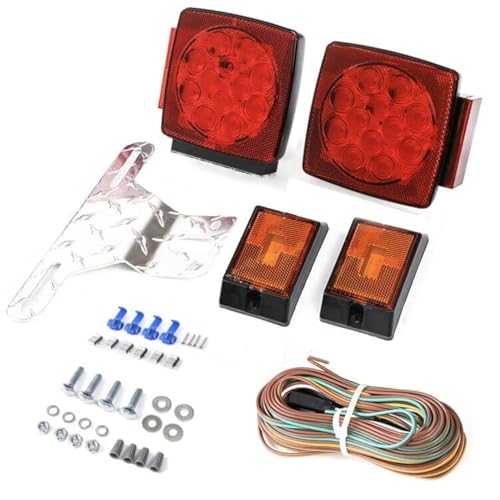Thanks to you all for the words of encouragement. I was pretty disappointed when I made this post because I just wanted to fiddle with the carbs a bit before launching it the following day. Now with the concern over the impeller any fun on the lake is on hold. I see next week we're supposed to get some 60s so maybe if the Boating Gods shine their favor on me I'll get out there yet!
As usual Pappy's comment concerns me some, but maybe all plastic framed muffs aren't the same? I did a good bit of research and the only set that stood out from the crowd were these ones. Guess as long as they don't break right out of the box I'll be good. Not something I anticipate using often.
Thanks for the impeller link and the advice to just pull it apart first. I guess that makes sense, but I might order an impeller anyway. If all I need is that part I'll be back in business quicker than if I wait. Amazon is good about taking stuff back, so no biggy if it's the wrong one.
Even though the seal on the square muffs was not that great, I have big time water pressure here at the house with a well that puts out 55 psi and I get most of that at the hose end as it's 3/4" to the spigot and the hose is 5/8". Guess maybe I should have turned it down some, but was thinking the more water the better.
I don't know what's up with the idle. When first messed with it, first got it running, I could back the idle stop completely off and it still was over 1,000 RPMs I'm sure. After tugging on stuff and doing nothing else she settled down to an est 700 maybe? Just a little high. Was going into gear with no major complaints. It tends to idle high after I rev it up. Once it settles down it stays there.
In my rush to get it out on the water at least once, must admit I didn't change out the fuel lines. They are really rubbery though and I think they aren't too old. I can't rule out it sucking air though, I can smell a little gas under the hood, but don't know if that means much. Guess I better get some new lines on it. One thing surprising is I think the lines are only 3/16" because one of my 3/16" filters slipped right on. I don't know much, but I do know that my 25 HP Rude has 1/4".....or maybe bigger going to the pump at least.
Everything I’m sharing with you is from my own experience. I’m not an outboard technician but I’m a small engine mechanic which made it easier for me to learn my outboard.
I had no tachometer so I purchased a Tiny Tach. It has a wire that wraps around one of the spark plug wires then set it for the type of engine. My case was 2 stroke 3 cylinder. Then down loaded a free maintenance manual for my outboard and got me the specs. My 40 hp Yamaha idles between 750-850rpms once in gear it idles 550-650rpms.
Mine will act like yours. When I first start it the engine will idle high then settle down. If I rev it a little it takes it a few seconds to settle back down. Especially if it’s own muffs which I learned it’s not supposed to be rev on muffs. It needs that back pressure of being in the water. I have seen outboard technicians rev them on muffs a little but not to high.
I didn’t think I was ever going to get mine running correctly until I adjusted it on the water.
You might look at the linkage Incase it’s sticking a little. Clean and lube it.
My fuel line is 5/16 (8mm) It goes from a portable tank to an OEM primer bulb to a fuel water separator then to the motor. Under the cowling it’s 1/4” (6mm) which goes to the fuel filter on the motor then to the pump then carburetors.
Looking back I would have bought 3/8” instead of 5/16” because 3/8” is mor popular and easier to find fittings for.
The 5/16” hose is the black (stay away from the pre made grey stuff) and is the A1-15 marine fuel line.
I used gorilla sleeve to cover the fuel line from the sun and abrasion . We used the same stuff on hydraulic hoses where I worked.
I learned the hard way it’s worth the extra money to buy OEM parts such as the fittings engine parts etc. All the fuel line under the cowling for mine was ordered from a marine parts online. I found my outboard and they give you a parts breakdown. Each of the fuel hoses I replaced under the cowling came pre shaped . As easy as putting a puzzle together and no kinks or restrictions.
Also even though I have a fuel water separator I use nothing but none ethanol fuel. I’ve seen how fast ethanol ruin fuel systems in small engines that sit any length of time. If you don’t have access to none ethanol use a good stabilizer.
I did all this to mine and I tend to go overboard sometimes but my fuel line is three years old and still like new. The inside lining isn’t collapsing. And if there is ever a situation and I have to use my insurance I have the correct stuff in place.





























































